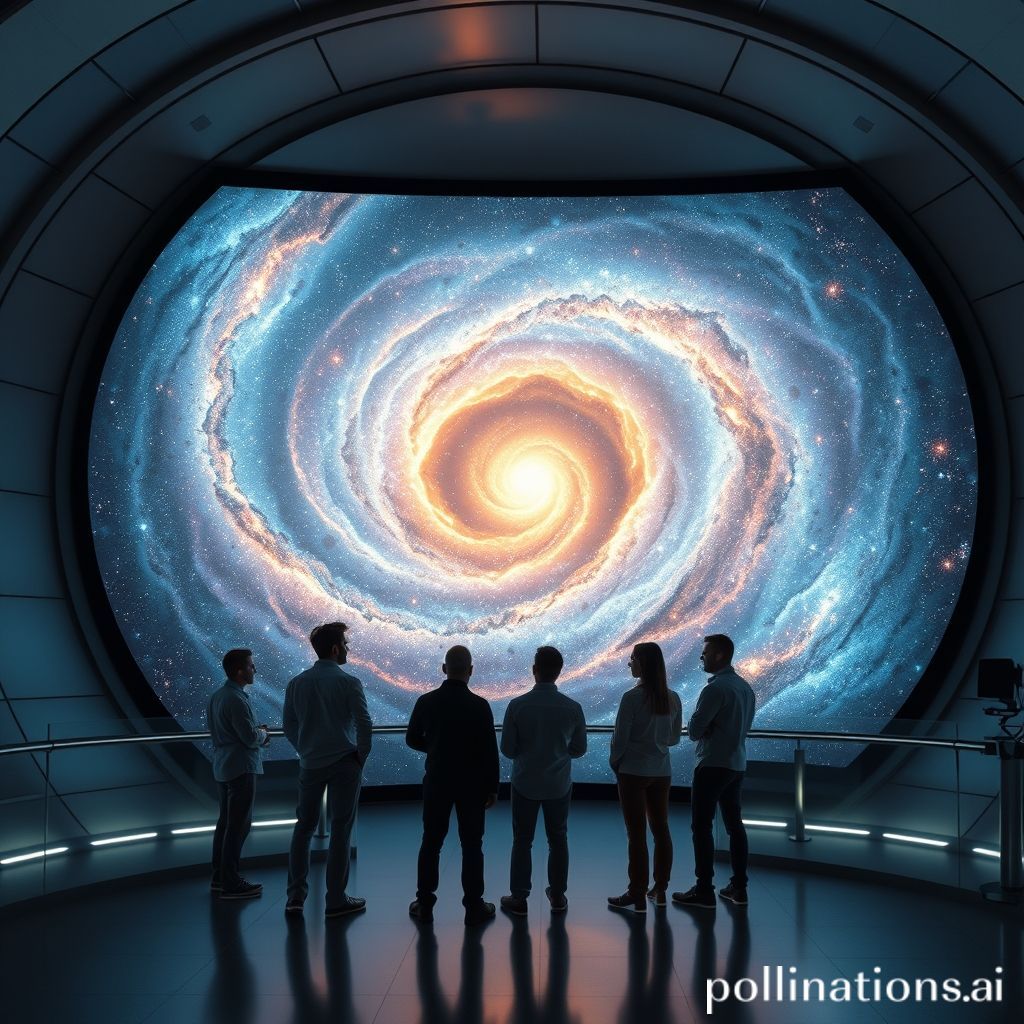
Astronomers capture most detailed image of a galaxy of its kind ever seen
A Cosmic Masterpiece Unveiled: The Most Detailed Image Ever of a Barred Spiral Galaxy
Hello fellow space enthusiasts! Prepare to be amazed because astronomers have just gifted us with a breathtaking view: the most detailed image ever captured of a barred spiral galaxy of its kind. This isn't just another pretty picture; it's a treasure trove of information that's helping us unravel the mysteries of galactic evolution. Let's dive in and explore this cosmic masterpiece!
What Galaxy is in the Spotlight?
The star of the show is NGC 1365, a barred spiral galaxy located approximately 56 million light years away in the constellation Fornax. This galaxy is a prime example of its type, showcasing a prominent central bar structure and well defined spiral arms teeming with star formation. It s a cosmic beauty that has captivated astronomers for decades.
The Power Behind the Image
This groundbreaking image isn't the work of just one telescope. It s a collaborative effort, combining the power of the Atacama Large Millimeter/submillimeter Array (ALMA) and the Multi Unit Spectroscopic Explorer (MUSE) instrument on the Very Large Telescope (VLT).
ALMA, with its incredible ability to observe in millimeter and submillimeter wavelengths, peered through the dust clouds obscuring visible light. This allowed astronomers to map the distribution of cold molecular gas, the raw material for star formation, with unprecedented precision.
MUSE, on the other hand, provided complementary data in the visible light spectrum, revealing the distribution of stars and ionized gas within the galaxy. By combining these datasets, astronomers created a comprehensive picture of NGC 1365, showcasing both its stellar populations and the fuel that drives its star formation activity.
Why is this Image so Important?
So why all the excitement? This image provides a wealth of information that's crucial for understanding how galaxies like our own Milky Way form and evolve. Specifically, it sheds light on several key processes:
Star Formation: The image reveals the intricate relationship between cold molecular gas and star formation. Astronomers can now study in detail how gas clouds collapse to form stars within the spiral arms of the galaxy.
Bar Dynamics: The bar structure in NGC 1365 plays a crucial role in funneling gas towards the galactic center, fueling star formation and potentially feeding a supermassive black hole. The new image allows scientists to study the dynamics of the bar and its influence on the galaxy as a whole.
Galaxy Evolution: By studying NGC 1365, astronomers can gain insights into the processes that shape the evolution of spiral galaxies over cosmic time. This includes understanding how galaxies grow through mergers and accretion, and how their star formation activity changes over billions of years.
Comparing NGC 1365 to Our Milky Way
While we can't take an external picture of our own Milky Way, studying galaxies like NGC 1365 provides valuable clues about our galactic home. Both are barred spiral galaxies, but there are some key differences:
| Feature | NGC 1365 | Milky Way |
| : | : | : |
| Size | Slightly larger | Smaller |
| Bar Structure | More prominent, well defined | Less prominent |
| Star Formation | Higher rate of star formation | Lower rate of star formation |
| Black Hole Activity | Potentially more active black hole | Relatively quiet black hole |
By comparing these features, astronomers can refine their models of galaxy evolution and better understand the unique characteristics of our own Milky Way.
The Future of Galactic Exploration
This detailed image of NGC 1365 is just a glimpse of what's to come. As telescope technology continues to advance, we can expect even more breathtaking images and groundbreaking discoveries that will further unravel the mysteries of the universe.
The James Webb Space Telescope, for example, is already providing unprecedented views of distant galaxies, allowing astronomers to probe the early universe and witness the formation of the first stars and galaxies. Future telescopes, such as the Extremely Large Telescope (ELT), will offer even greater resolution and sensitivity, enabling us to study galaxies in even greater detail.
A Reflective Conclusion
Looking at this image of NGC 1365, I can't help but feel a sense of awe and wonder. It's a reminder of the vastness and complexity of the universe, and our place within it. Each point of light represents billions of stars, and each galaxy is an island universe in its own right. It's inspiring to think about the dedication and ingenuity of the astronomers who made this image possible, and the countless hours of work that went into analyzing the data. This image is not just a scientific achievement; it's a testament to the power of human curiosity and our relentless pursuit of knowledge. I wonder what other cosmic wonders await us, and what new secrets we will uncover in the years to come. The universe is full of surprises, and I can't wait to see what we discover next.

0 Comments:
Post a Comment